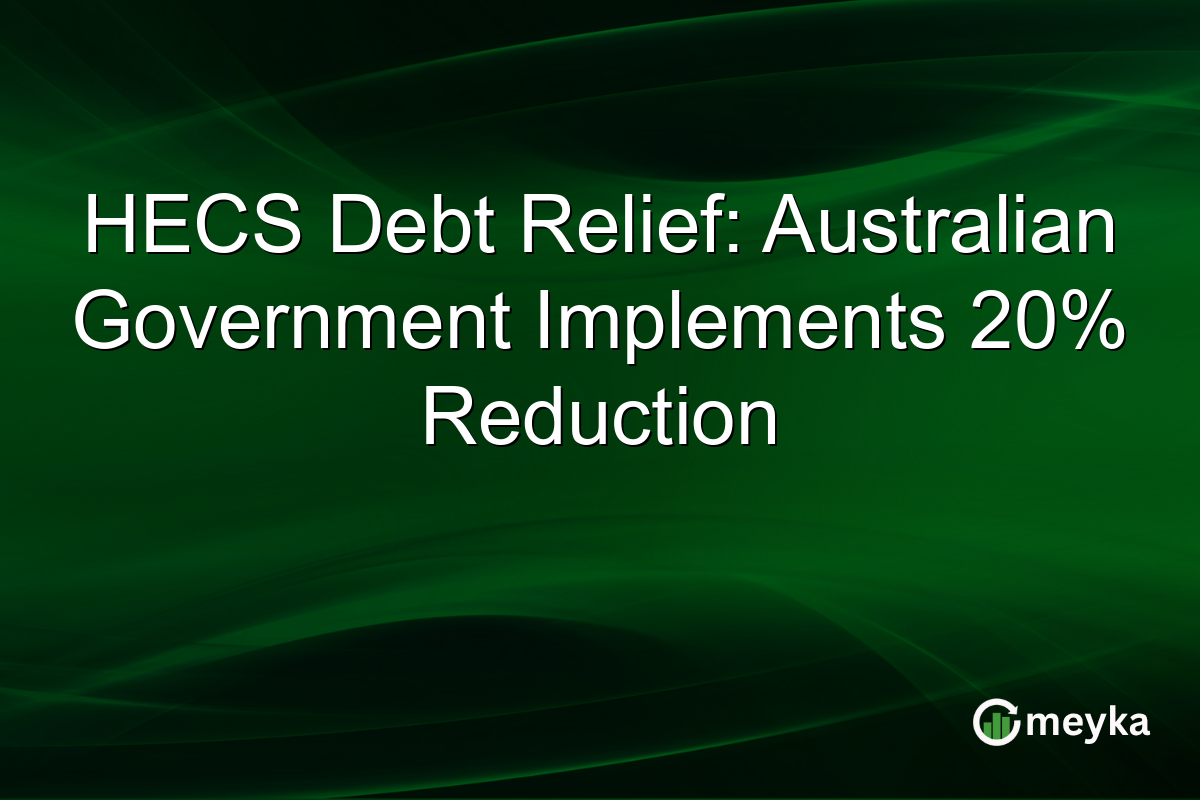HECS Debt Relief: Australian Government Implements 20% Reduction
The Australian government has made a striking move by implementing a 20% reduction in HECS debt. This policy promises to relieve financial pressure for around three million Australians, averaging a $5,520 decrease per person. As education costs rise, this student loan relief effort aims to ease the burden on graduates, affecting both their financial health and spending capabilities.
Understanding the HECS Debt Reduction
The HECS debt reduction is a timely response to ongoing concerns about rising student debts. The average Australian university graduate leaves with a significant financial burden, often taking years to repay. By cutting these loans by 20%, the government is addressing both immediate financial strain and broader economic conditions impacted by high educational costs. Source: 7News. This government policy doesn’t just help individual finances. Reducing HECS debts also stimulates consumer spending, as graduates find themselves with more disposable income. This, in turn, can have positive ripple effects across the economy, boosting retail and housing markets.
Impact on Graduates and the Economy
For graduates, the reduction has two main impacts. First, it lowers the repayment burden, improving daily financial stability. Second, it enhances future financial planning opportunities. Instead of allocating funds to debt repayments, more can be directed towards savings and investments. The broader economic impact is significant. With lower debt, graduates can pursue opportunities like homeownership or entrepreneurial ventures quicker. This shift can energize the economic landscape, contributing to growth and innovation. Source: SBS.
Student Loan Relief as a Strategic Move
The decision aligns with strategic efforts to bolster economic stability. It not only targets current financial discomfort but also plants seeds for long-term economic resilience. Such impactful moves prove necessary amidst rising living costs, where alumni struggle between repayments and essential expenses. This policy reflects a commitment to enhancing the quality of life for Australians while promoting fiscal responsibility. By alleviating debt, the government is crafting a healthier economic environment that encourages growth in various sectors.
Final Thoughts
The HECS debt reduction provides essential relief to countless Australians, ensuring they can manage their finances better in the long run. This policy does more than just cut numbers; it empowers graduates to invest in their futures, whether through home ownership or personal ventures. As such, this decision by the Australian government showcases a proactive approach to economic management, marrying fiscal relief with growth potential. Platforms like Meyka offer valuable insights into such evolving financial landscapes, allowing individuals to make informed decisions about their economic futures. Ultimately, this initiative marks a step forward in supporting Australians toward prosperity and growth.
FAQs
The HECS debt reduction is a 20% cut to the total HECS or student loans held by Australian graduates. This move aims to alleviate financial stress and stimulate economic activity by increasing disposable income for loan holders.
For graduates, the main benefits include a reduction in their loan repayments and increased disposable income. This allows them to focus on other financial goals like saving, investing, or purchasing property sooner.
Reducing HECS debt can lead to increased consumer spending, which benefits retail and housing markets. It also enables graduates to contribute positively to economic growth through investments and entrepreneurship.
Disclaimer:
This is for information only, not financial advice. Always do your research.






